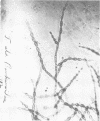Abstract
It is proposed that the dematiaceous hyphomycete Cladosporium bantianum (Saccardo) Borelli be transferred to the genus Xylohypha (Fries) Mason as Xylohypha bantiana (Saccardo) McGinnis, Padhye, Borelli, et Ajello. This new combination is necessary because X. bantiana produces conidiophores that are indistinguishable from its vegetative hyphae and one-celled, smooth-walled conidia that are borne in long, infrequently branched chains. The blastoconidia do not possess darkly pigmented hila. In contrast, members of the genus Cladosporium Link produce erect, distinct conidiophores and one- to four-celled smooth-to-rough-walled conidia that occur in short, frequently branched, fragile chains. The blastoconidia have darkly pigmented hila. Cladosporium trichoides Emmons is a later synonym of X. bantiana.
Full text
PDF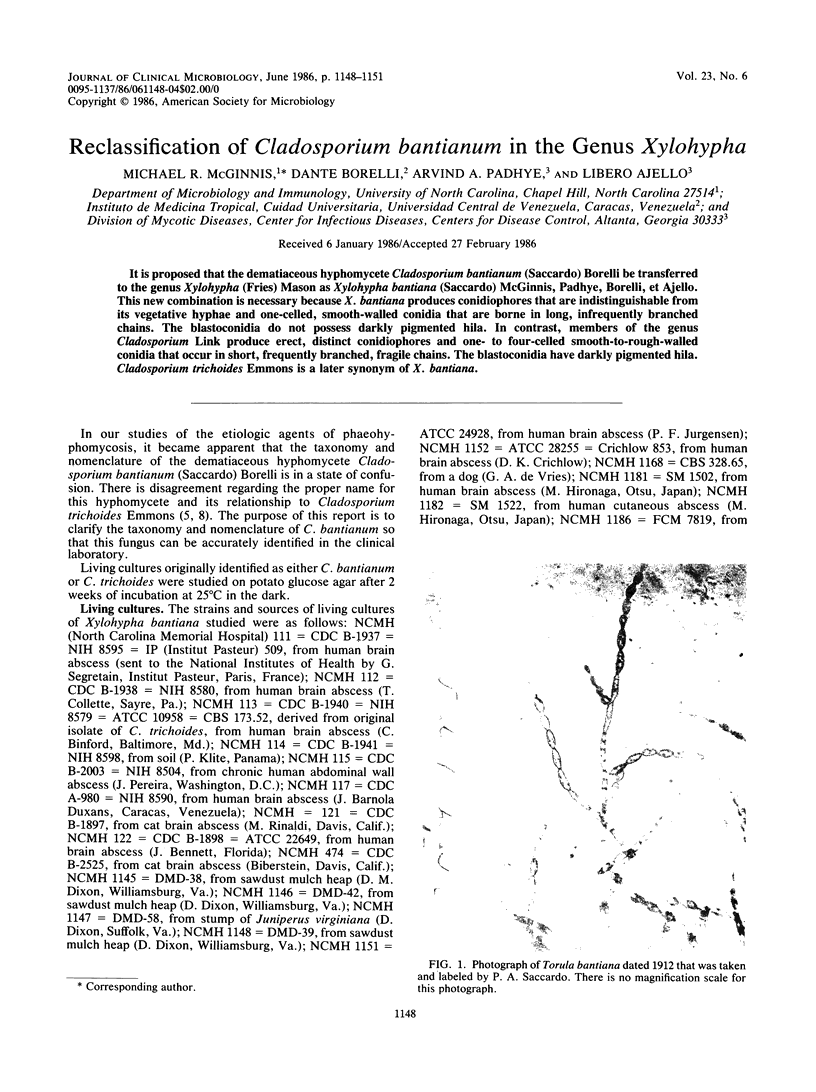
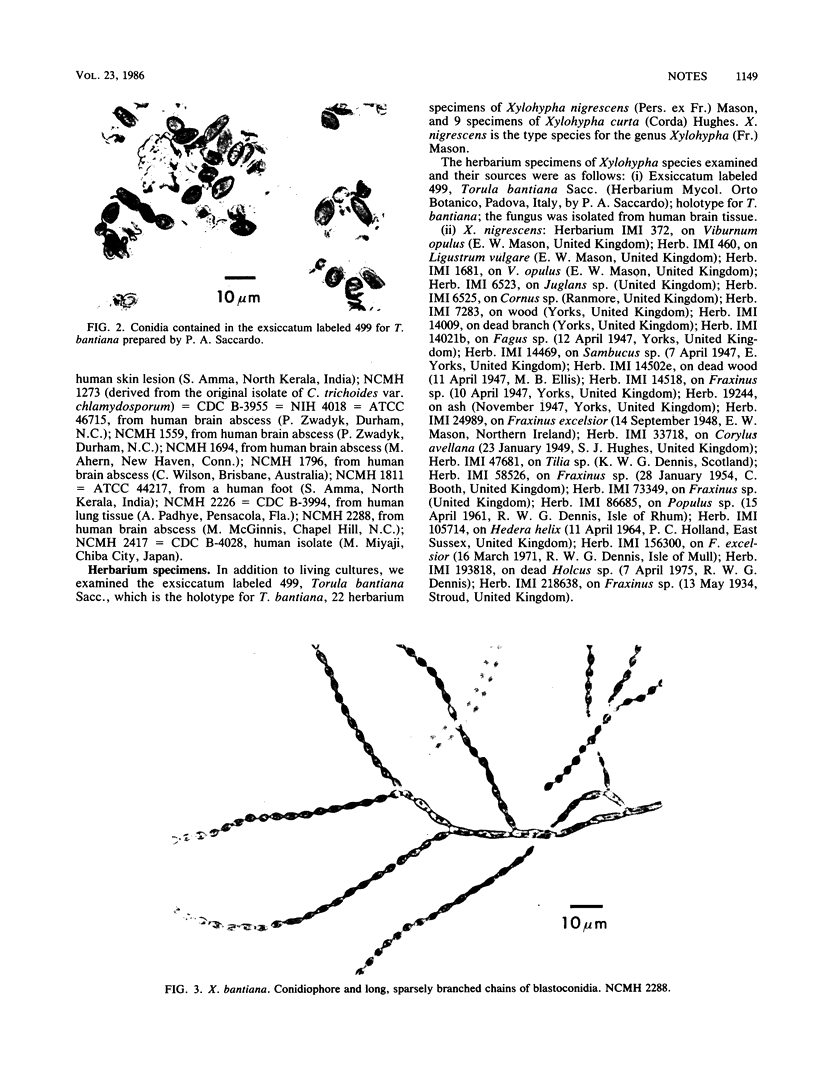
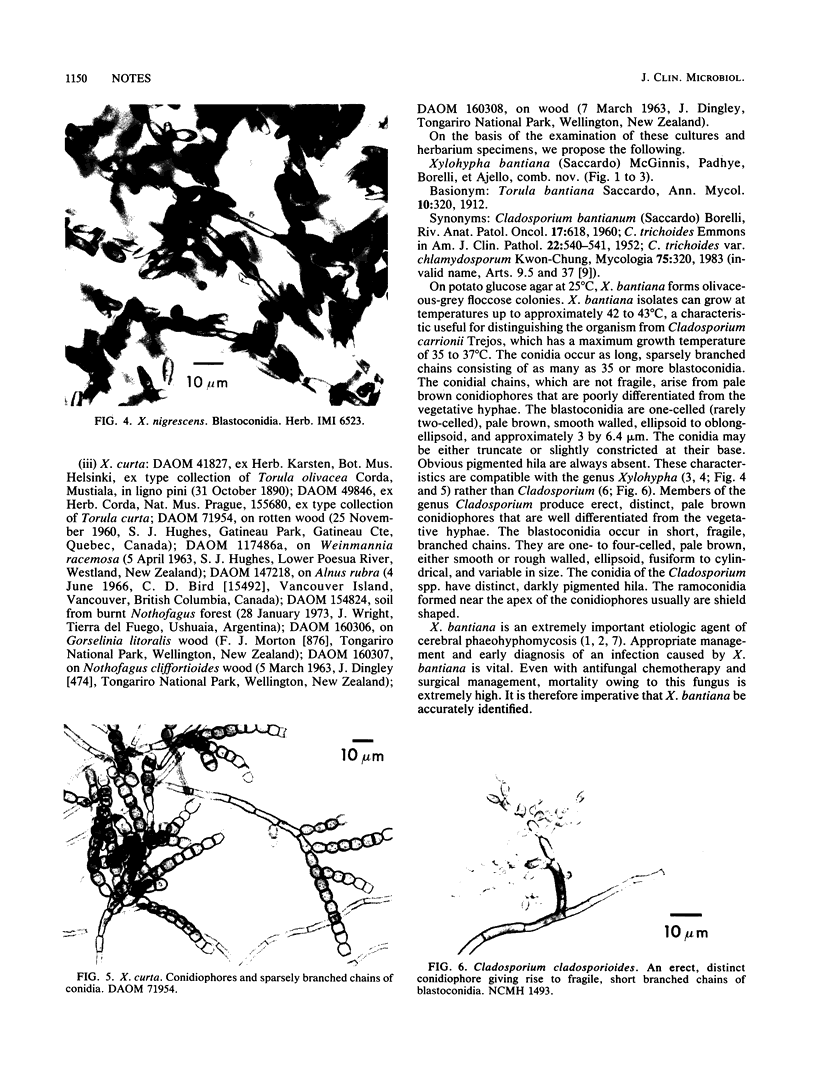
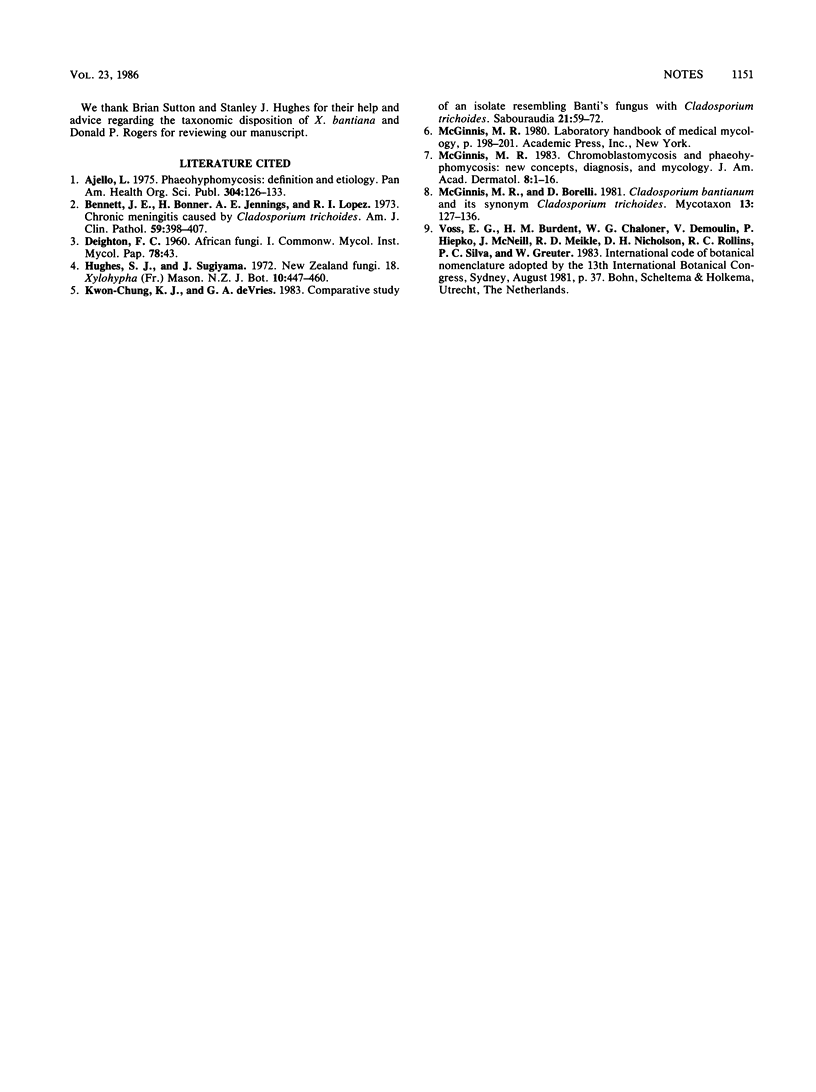
Images in this article
Selected References
These references are in PubMed. This may not be the complete list of references from this article.
- Bennett J. E., Bonner H., Jennings A. E., Lopez R. I. Chronic meningitis caused by Cladosporium trichoides. Am J Clin Pathol. 1973 Mar;59(3):398–407. doi: 10.1093/ajcp/59.3.398. [DOI] [PubMed] [Google Scholar]
- Kwon-Chung K. J., de Vries G. A. Comparative study of an isolate resembling Banti's fungus with Cladosporium trichoides. Sabouraudia. 1983 Mar;21(1):59–72. doi: 10.1080/00362178385380091. [DOI] [PubMed] [Google Scholar]
- McGinnis M. R. Chromoblastomycosis and phaeohyphomycosis: new concepts, diagnosis, and mycology. J Am Acad Dermatol. 1983 Jan;8(1):1–16. doi: 10.1016/s0190-9622(83)70001-0. [DOI] [PubMed] [Google Scholar]



